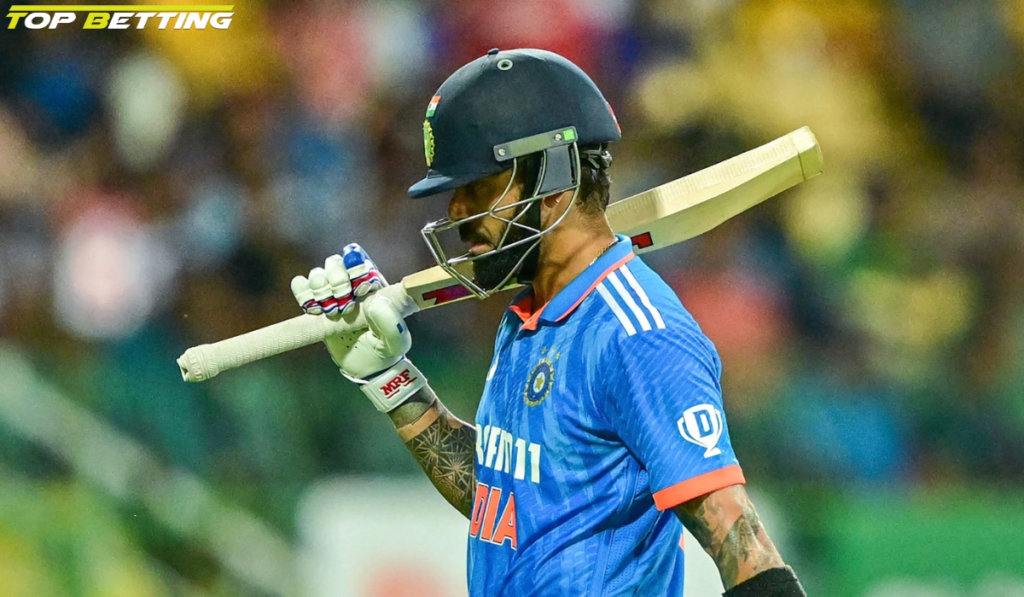
Virat Kohli’s Struggles Against Spin and India’s ODI Series Defeat to Sri Lanka
The Indian cricket team’s recent tour to Sri Lanka for a three-match One Day International (ODI) series has become a point of considerable discussion and debate in the cricketing community. India suffered a rare and disheartening 0-2 defeat in the series, marking the first time since 1997 that the Men in Blue lost a bilateral ODI series to Sri Lanka. The series loss was particularly striking given India’s dominance over Sri Lanka in recent years, both home and away. This unexpected setback has sparked intense scrutiny over the performance of the Indian team, especially regarding their struggles against spin bowling on the challenging pitches of Colombo.
A key focus of these discussions has been the performance of Virat Kohli, India’s premier batsman and one of the most prolific run-scorers in the history of the game. Kohli, who has been the backbone of India’s batting lineup for over a decade, failed to make any significant impact in the series. Across the three matches, Kohli managed scores of 24, 14, and 20, failing to cross the 30-run mark even once. These numbers are a stark contrast to the high standards Kohli has set for himself, and they have reignited conversations about his vulnerability against spin bowling, particularly on turning tracks.
The series began with India hoping to bounce back after a disappointing performance in the 2023 World Cup, where they failed to reach the final. The return of senior players like Kohli and Rohit Sharma was expected to bolster the team’s chances, but the conditions in Sri Lanka proved to be a formidable challenge. The pitches in Colombo were far from the flat, batting-friendly tracks that players often encounter in India, presenting a significant test for the Indian batsmen, who are generally more accustomed to playing on good wickets with small boundaries.
The first ODI set the tone for the series, with the Sri Lankan spinners exploiting the conditions to full effect. Kohli, coming in at number three, was expected to anchor the innings after a solid start by the openers, but he found himself struggling to get going. The ball turned sharply and consistently, making it difficult for Kohli and his teammates to settle in and build an innings. His dismissal for 24 was a critical blow to India’s chase, as the middle order crumbled under pressure, leading to a comprehensive defeat.
The second ODI followed a similar script, with the Indian batting lineup once again floundering against the spin trio of Maheesh Theekshana, Wanindu Hasaranga, and Dhananjaya de Silva. Kohli’s contribution of 14 runs in this match was emblematic of India’s broader struggles. Despite getting a start, he was unable to convert it into a substantial score, falling prey to the relentless pressure applied by the Sri Lankan spinners. The chase, which should have been manageable under normal circumstances, turned into an uphill battle on the tricky surface, and India eventually fell short, handing Sri Lanka a series-clinching victory.
In the final ODI, with the series already lost, India hoped to salvage some pride by avoiding a whitewash. However, the story remained unchanged. Kohli once again found himself battling against the conditions and the Sri Lankan bowlers. Despite showing glimpses of his trademark aggression and intent, he could only muster 20 runs before being dismissed, leaving India in a precarious position. The team’s inability to adapt to the spin-friendly conditions was evident as they failed to chase down the target for the third time in a row, culminating in a 0-2 series defeat, with the third match abandoned due to rain.
The narrative of the series has been dominated by the discussions around Kohli’s form and his apparent struggles against spin. Former India wicketkeeper Dinesh Karthik, who has shared the dressing room with Kohli during their time at Royal Challengers Bangalore (RCB) in the Indian Premier League (IPL), weighed in on the debate. Karthik pointed out that the pitches in Colombo were exceptionally difficult for batting, especially in the middle overs when the ball was relatively new and turning sharply. According to Karthik, the conditions were challenging not just for Kohli but for all the Indian batsmen, including Rohit Sharma, who is known for his prowess against spin.
“In this series… let’s admit it. Be it Virat Kohli, Rohit Sharma, or anyone else. With a slightly semi-new ball, between overs 8-30, it’s hard work. Nothing to worry about. Not too many pitches work that way, but it’s been a tough pitch to play spinners. I’m not going to defend Virat Kohli here, but playing spin here is very hard,” Karthik said during an analysis session on Cricbuzz. His comments suggest that Kohli’s underwhelming performances were not solely due to a technical deficiency but were also a result of the difficult playing conditions.
Sri Lankan spinner Maheesh Theekshana, who played a crucial role in his team’s victories, also acknowledged the advantage the turning tracks provided to the home side. Theekshana remarked that Indian batsmen are generally more comfortable on flatter pitches with shorter boundaries, conditions they often encounter in domestic cricket. “They (India) usually play on good wickets and small boundaries in India,” Theekshana noted after the series. He further emphasized that the Sri Lankan team had anticipated the challenges the Indian batsmen would face at the R. Premadasa Stadium in Colombo, particularly if there was some turn on offer. “We knew playing in Premadasa, if there’s a little bit of turn, we can take advantage because we have good spinners,” he added.
The series also marked a significant return to the ODI format for both Virat Kohli and Rohit Sharma after the World Cup. Their return was supposed to bring stability and experience to the team, but the outcome was far from what was expected. The inability of two of India’s most seasoned players to counter the conditions has raised concerns about the team’s adaptability and their readiness to face similar challenges in future series, particularly in subcontinental conditions where spin is often a dominant factor.
Kohli’s performance in this series has undoubtedly added to the ongoing discourse about his form and his place in the team as India prepares for upcoming assignments, including the ICC tournaments and bilateral series. While his overall record remains stellar, the recent dip in form against spin has highlighted a potential area of concern that Kohli will need to address as he looks to extend his illustrious career.
In conclusion, India’s ODI series against Sri Lanka has served as a reminder of the challenges that even the best players can face under difficult conditions. The series defeat, coupled with Kohli’s struggles, has sparked a broader conversation about the Indian team’s preparedness to tackle spin-friendly tracks and adapt to varying playing conditions. As the team regroups and plans for future tours, these lessons will be crucial in shaping their strategies and ensuring that they are better equipped to handle such challenges moving forward.












